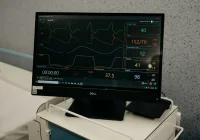Ultrasound use continues to expand across radiology, cardiology and point-of-care settings, bringing valuable imaging to more patients and clinical workflows. With broader adoption comes a greater need to manage infection risks linked to device reprocessing. Effective cleaning and disinfection depend on understanding how probe use, contact surfaces and validated processes intersect with manufacturer recommendations. In practice, variability among devices and instructions can create uncertainty, particularly where multiple vendors are in use or where guidance appears inconsistent across professional statements and regulatory expectations. Clarifying the level of reprocessing required for each clinical use case is critical to patient and staff safety as well as to equipment longevity.
Risk Stratification and Reprocessing Levels
Determining the appropriate level of reprocessing starts with established risk stratification. For ultrasound probes that contact only intact skin, low-level disinfection (LLD) is generally considered appropriate. Probes that contact mucous membranes are treated as semi-critical and require high-level disinfection (HLD). Devices used in sterile body cavities are considered critical and demand sterilisation. These categories are well recognised, but their application can vary with probe design and intended use. As handheld and point-of-care systems proliferate beyond traditional imaging departments, new users may underestimate the importance of rigorous reprocessing for transducers that contact mucosal surfaces or enter sterile fields.
Operational examples illustrate why precise categorisation matters. A probe used for abdominal scanning may be adequately reprocessed with a vendor-approved disinfectant wipe when only intact skin is involved. In contrast, an endovaginal probe involves semi-critical contact and requires a more intensive cycle that achieves HLD. Although HLD is sometimes used as a substitute for sterilisation, it may not be sufficient for all semi-critical applications. Facilities must therefore evaluate practices against both the level of risk dictated by use and the specific instructions supplied by manufacturers. Consistent adherence protects patients from cross-contamination, supports regulatory compliance and helps maintain equipment performance over time.
Navigating Manufacturer Instructions and Conflicting Guidance
Manufacturers validate reprocessing products and processes as part of regulatory clearance pathways, including 510(k) submissions. As a result, instructions for use (IFU) specify compatible cleaning agents, disinfectants and cycle parameters for each device. In organisations that deploy equipment from multiple vendors, these IFU can diverge in important ways, creating a complex landscape for clinical teams striving to standardise workflows. The challenge intensifies when general professional guidance does not fully align with product-specific instructions.
A notable example is the 2021 Intersocietal Position Statement addressing transducers used in percutaneous procedures and covered by a sterile sheath. The statement suggests that LLD between uses is sufficient for such probes. Other guidance, however, classifies these probes as semi-critical and therefore requiring HLD. When confronted with divergent recommendations of this kind, facilities need a structured decision-making approach that prioritises effective disinfection to the required level while aligning with vendor-validated processes. Infection prevention specialists are central to reconciling these inputs and translating them into operational policy.
Must Read: Building a Framework for POCUS in Large Hospitals
Where a disinfectant or process is not explicitly listed in the IFU, the prudent step is to consult the manufacturer to confirm compatibility and efficacy. Any deviation from IFU should be documented with a clear rationale within the infection prevention and control policy. This documentation helps ensure consistent practice, supports auditing and mitigates risk should questions arise about reprocessing choices. Ultimately, clinical use cases, device-specific instructions and local policy must be harmonised to avoid gaps or contradictory practices across services.
Building Practical Protocols Across the Whole System
Effective ultrasound reprocessing extends beyond the transducer. Key touchpoints such as the scanner console, keyboards and gel bottles can harbour contaminants that pose risks to patients and staff if overlooked. A comprehensive protocol therefore encompasses all components that may be exposed during routine use. The goal is to embed repeatable steps that fit clinical workflows without compromising the required level of disinfection.
In practice, facilities benefit from mapping probe types and clinical applications to the appropriate reprocessing level, then pairing each with the correct IFU-compliant products and processes. Where multiple manufacturers are represented, clarity about which disinfectants, wipes or automated cycles are validated for each model reduces variability and error. Close coordination between infection prevention teams, biomedical engineering and frontline users helps maintain alignment as devices are added or replaced.
Sustaining compliance also depends on training and accessible guidance. As ultrasound moves into new settings and among clinicians who may not have traditional imaging training, reinforcing the rationale for LLD, HLD or sterilisation helps ensure that transducer contact type and clinical use consistently drive the reprocessing choice. Policies should specify escalation steps when uncertainty arises, including manufacturer consultation and documentation of any policy exceptions. Taken together, these measures support safe, consistent and efficient disinfection that keeps pace with expanding ultrasound applications.
Ultrasound’s increasing clinical reach heightens the need for precise, validated and consistently applied reprocessing protocols. Risk stratification provides the baseline, but device-specific instructions and real-world workflows determine how those principles translate to practice. By aligning policies with manufacturer guidance, resolving conflicting recommendations through infection prevention expertise and addressing all system touchpoints rather than the transducer alone, organisations can reduce cross-contamination risk and protect both patients and equipment. Clear protocols, training and documentation form the foundation for reliable ultrasound disinfection as utilisation continues to grow.
Source:ECRI
Image Credit: Freepik










